This may be the only time today that someone will tell you that you can break a law. Sadly, this law has little to no legal or scientific value — instead, it’s concerned with writing headlines.
Betteridge’s law says that any headline which ends in a question mark can be answered “no”. Is this really the case though? Is it possible that a compelling headline can drive traffic and engagement even if it’s written in question format?
In this post, we’ll take a closer look at Betteridge’s law, try to understand what makes both good and bad question headlines, and end with some actionable steps to write your own headlines as questions without resorting to clickbait.
Use This Download to Help With Your Headlines
Before we send you off to learn some more about inquisitive headlines, check out this download bundle that’s prepped and ready to start assisting you with crafting your next awesome headline.
Here, you’ll find:
-
- An Editorial Calendar Template to help you keep track of deadlines, who’s doing what, what projects are pending, and so much more.
- A “How to Write Headlines” Words List to inspire your next effective headline and boost your engagement.
- 100 Headline Templates that are guaranteed to boost your traffic.
What is Betteridge’s Law of Headlines?
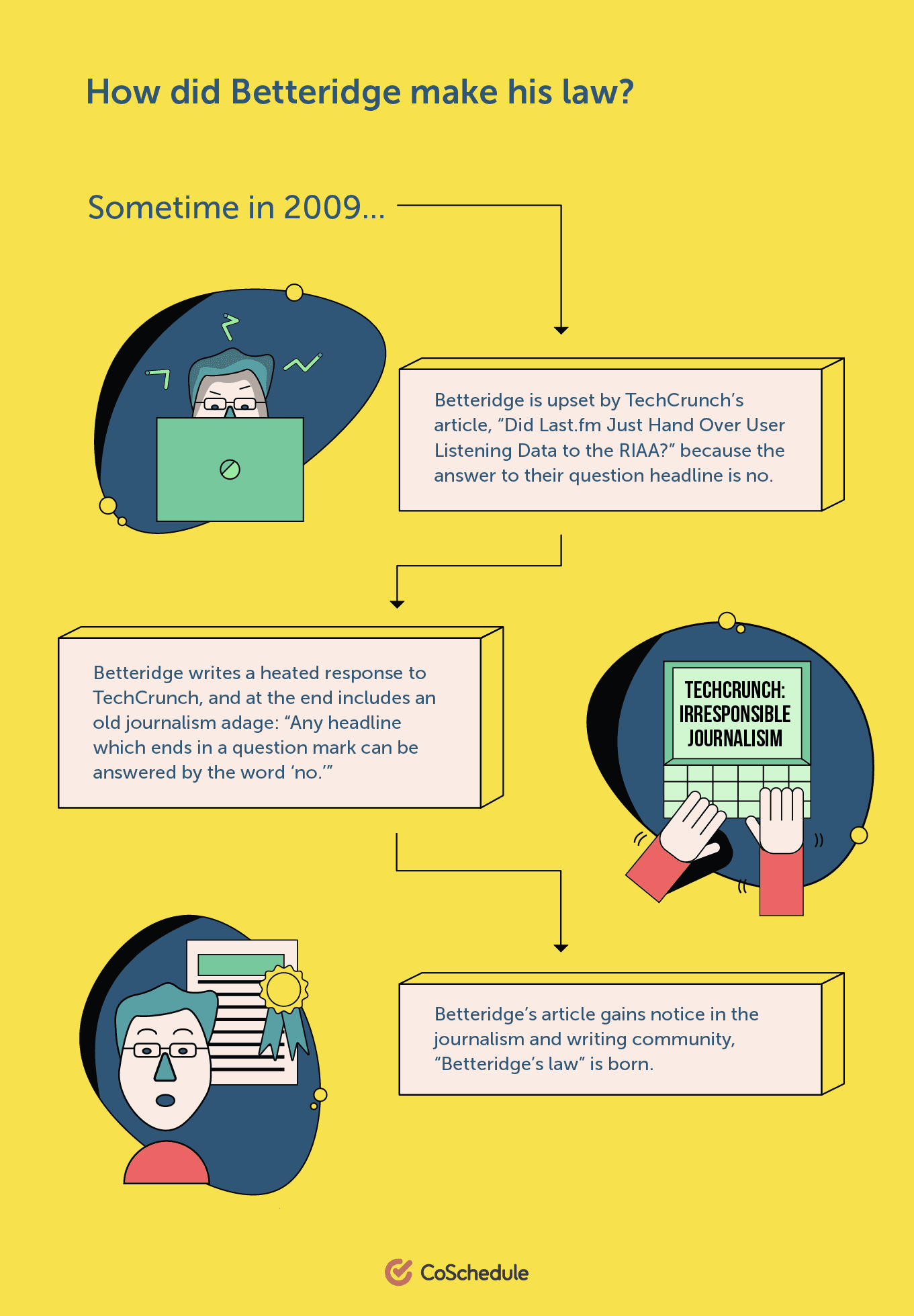
Way back in 2009, technology journalist Ian Betteridge had a bone to pick with TechCrunch, a technology news organization. TechCrunch had run an article titled, “Did Last.fm Just Hand Over User Listening Data To the RIAA?” In short, the answer was no, but even bringing up the question did extensive damage to Last.fm’s reputation.
Ian Betteridge went on to write a scathing response to TechCrunch’s article, and in the process coined what is now known as Betteridge’s law. Betteridge said, “This story is a great demonstration of my maxim that any headline which ends in a question mark can be answered by the word ‘no.’” This is Betteridge’s law.
He went on to explain that he views any article with a question style headline as being not worth the time to read, and that any publication who uses this headline style does so because the article is illegitimate and they want to protect themselves from accusations of libel — in a different, more animated choice of words, of course.
Betteridge’s law has been applied to a wide variety of contexts — including academic writing and web based headlines. While the “law” has not been and cannot be unequivocally proven, and is thus not technically a law, it does serve its purpose to push back against clickbait headlines that misrepresent the reality of an article.
What’s the Problem With Question Headlines?
As Betteridge’s law illuminates, the main problem with question headlines is that they can most often be answered with a simple yes or no. If that is the case, then the reader has no reason to continue reading your article — as any questions they may have had have seemingly been answered in the headline already.
Question headlines are also often used to sensationalize topics by framing the issue in a way that is not indicative of the true nature of the story.
Another issue with question headlines is that they are commonly used to cover up articles that simply have no factual backing, and many educated readers will not bother reading your article because if you had the answer, you would just say it in the headline.
Does Betteridge’s Law of Headlines Hold True?
Now, the real question: is Betteridge’s law true?
The short answer is sort of, but not really. While there are certainly a multitude of question headlines which follow Betteridge’s law, there are also a significant amount which don’t.
This law, therefore, is not really a law and should be seen more as a tongue-in-cheek remark on how dubious reporting often hides behind questionable headlines.
A great resource for those looking to learn more about Betteridge’s law is this website, which is dedicated to articles following Betteridge’s law from journalists who clearly haven’t had this lesson.
Examples of Question Headlines That Work
Now, let’s take a look at some question headlines which actually work and avoid the writing pitfall — which is Betteridge’s law.
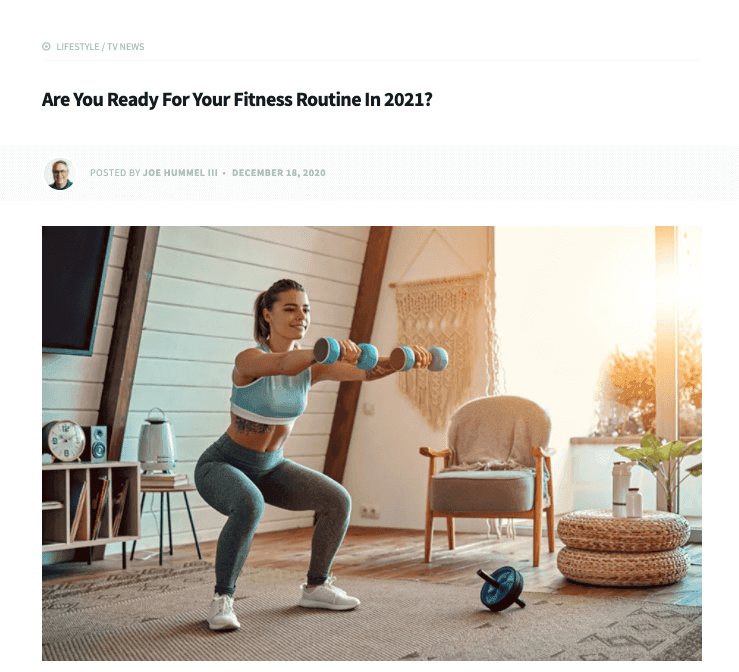
This question headline, posted on the PCM Network News website, asks readers a simple question: Are You Ready For Your fitness Routine in 2021? This question, while it can be answered yes or no, is effective because it will still pull in readers who answer with a no — or at least the ones who want to exercise but aren’t prepared.
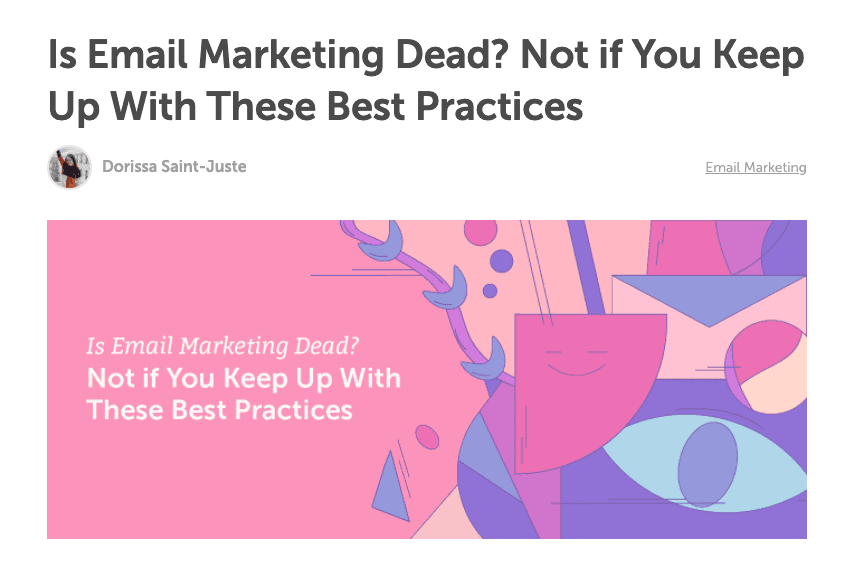
This headline from an article on the CoSchedule blog is a great example of setting up your headline with a question and then answering that question within the same headline. This is a great way to use questions in your headlines, as it pulls readers in with a relevant question and then indicates the answer and what the article has to offer on the topic.

This headline from another CoSchedule blog post is a great example because it is an open-ended question designed to capture the curiosity of readers by making them question themselves as to what the best marketing planner actually is. This is a great way to use question headlines to frame your articles and introduce your angle.
How Do You Write Interesting Question Headlines?
Now that you’ve seen some quality question headlines, it’s time to learn how to create click-worthy question style headlines for yourself. There are a few different ways to do this.
One way to use questions to increase interest in a headline is to use your question to challenge something that is considered common knowledge. A great example of this is another article from the CoSchedule blog, “Why Should You Write Shorter (But Better) Content?”.
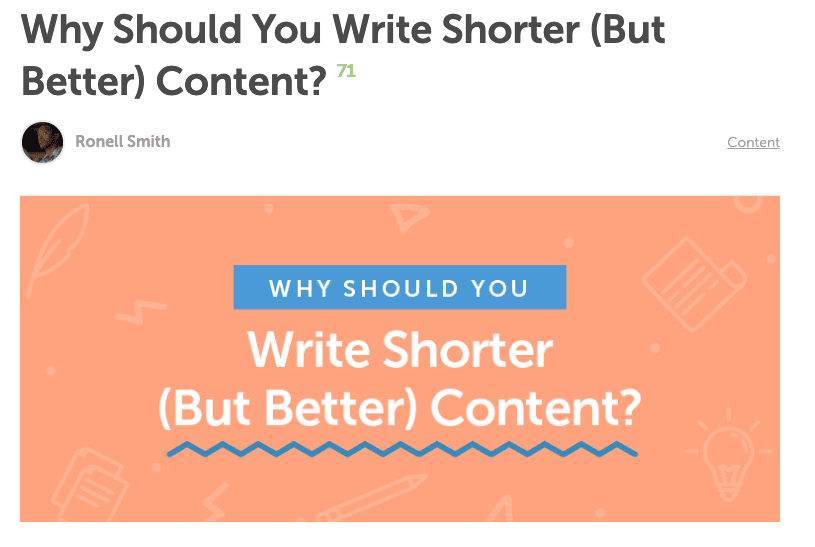
Framing the headline in this way is effective because it is challenging the notion that long-form pieces of content are more valuable on the internet than shorter content. By using a question to challenge a commonly held belief, the article makes a case for people interested to read it and learn about a different perspective on content length.
Another way to use question headlines to boost your content is to write about all sides of an issue and frame the topic with a question headline that has no real answer. An example of this type of headline comes from a podcast by Fizzle, titled, “If I’m So Smart Why Aren’t I Successful Yet?”.
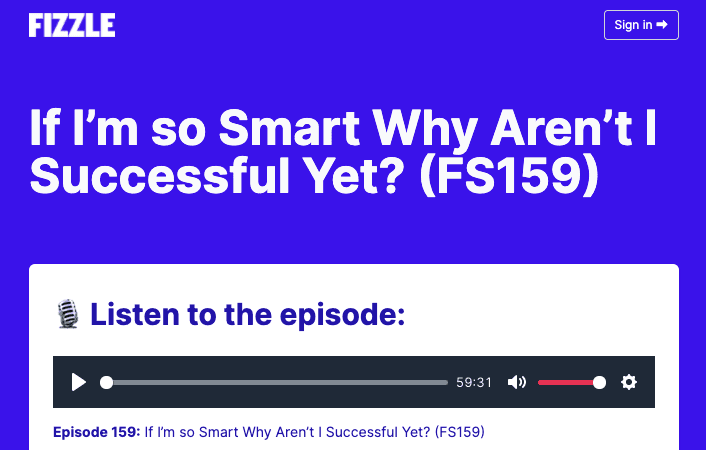
There is no real answer to this question, but framing the topic this way makes Fizzle’s audience self reflect, and those who want to be successful and aren’t will most certainly take notice — as it may be a question they’ve already asked themselves.
A key to writing any style of headline is to try writing all different types of headline styles. A great way to do this is to make use of headline templates and examples of great headlinesto inspire as many headlines as you can imagine — though I usually recommend writing 20–25 different versions before selecting a winner.
One of the main things to remember is that you should avoid clickbait content in general. When writing your headline, ask yourself, “Does my content deliver on the promises I’m making in this headline?” If the answer is no, you have clickbait. If you have clickbait, get rid of it.
Here are some more of the do’s and don’ts of question headline writing:
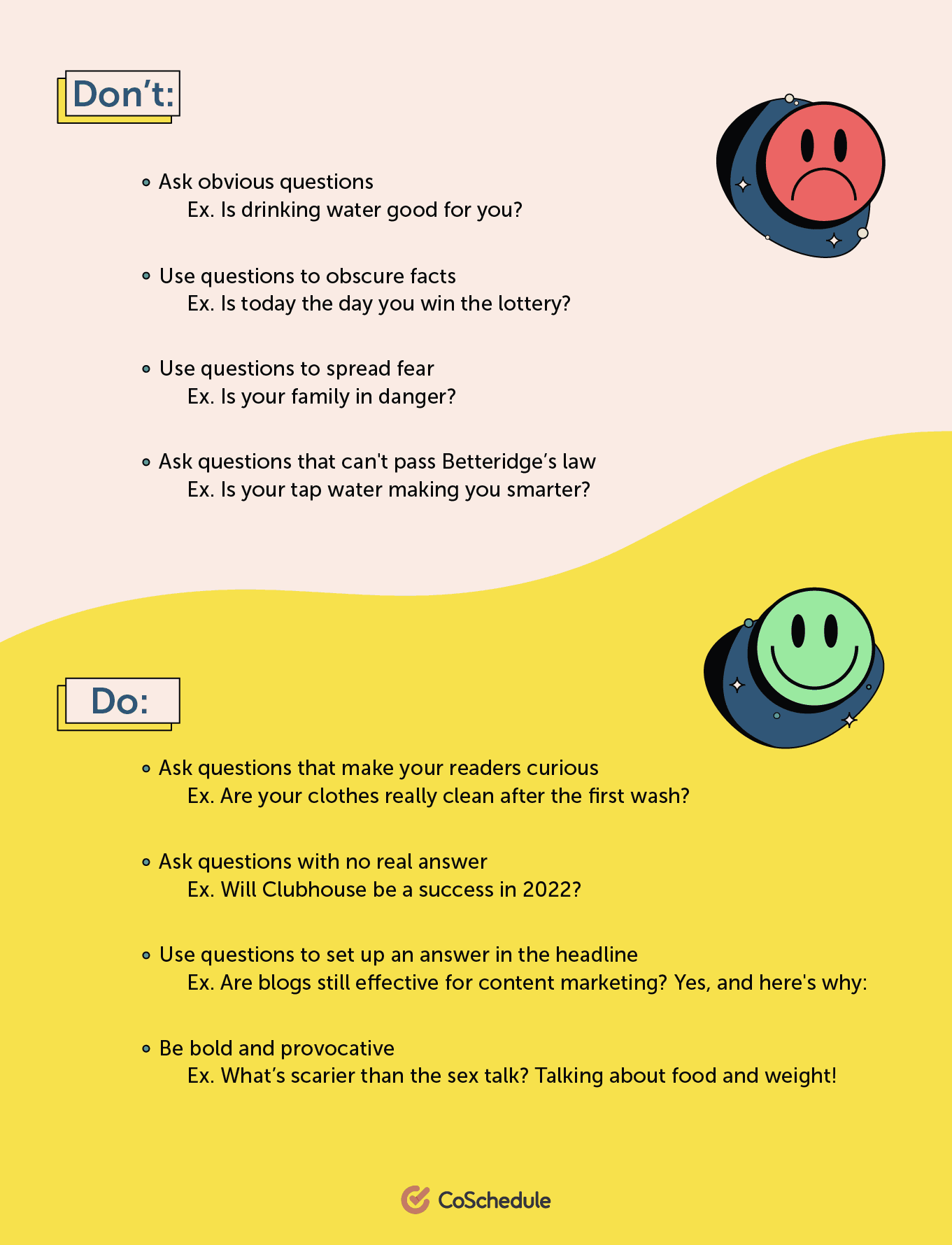
Write Your Headlines With Headline Analyzer Studio
The best way to make sure that your headline is always going to get results is to test your headlines in Headline Analyzer Studio. Simply type your headline into the analyzer and let it go to work. It will score your headline and recommend data-driven improvements to increase your headline score.
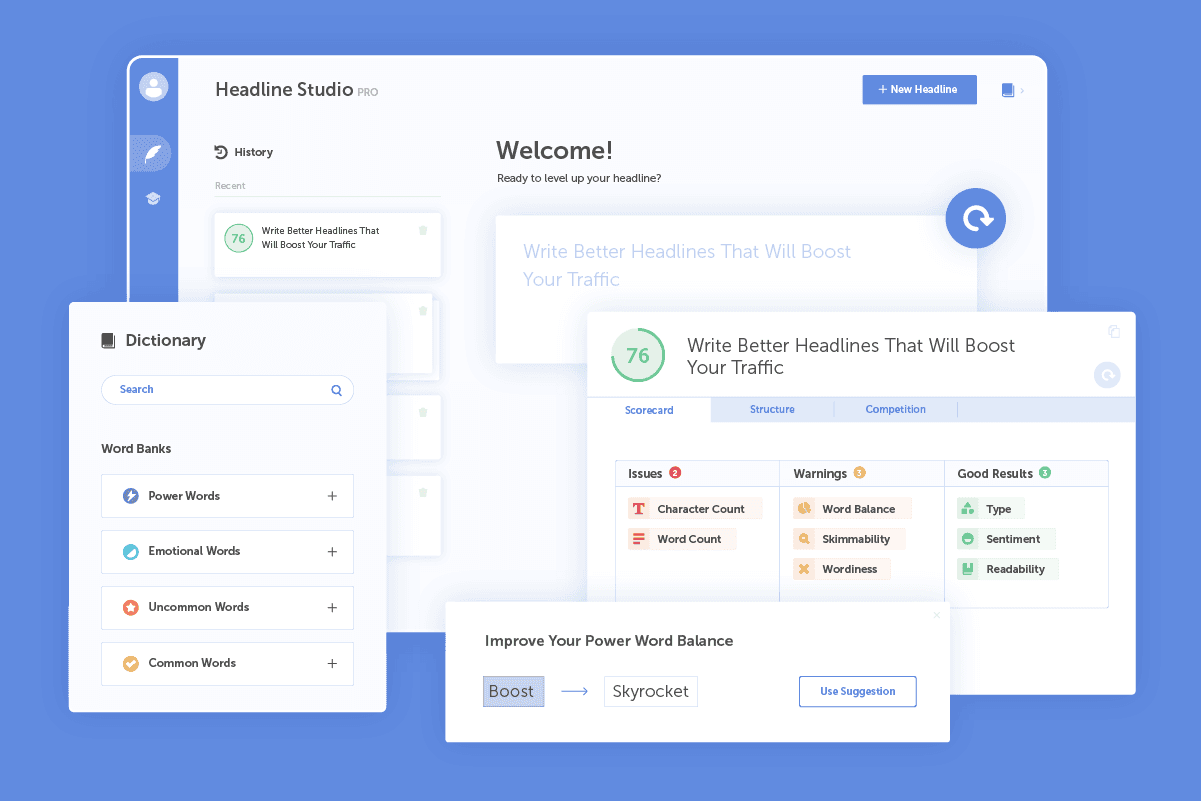
Try opening up the studio and testing a bunch of different styles of headlines to see how high you can get your score! Check out this post to learn more about Headline Analyzer Studio and see how it can improve your headlines right now.
The Power of Question Headlines
In this post we’ve covered Betteridge’s law and its implications for writing question headlines. We’ve looked at examples of people using headlines with questions effectively, and we’ve covered some tips for writing your own question style headlines.
By utilizing the power of questions in your headlines, you can ensure curiosity from your audience as they seek to find an answer — leading them to read your content. This only works when you use the questions effectively, however, and if you don’t, your headlines will turn into clickbait faster than readers can scroll past.
So, go out and ask great questions. Not only will you be able to increase traffic and engagement with your content, but you just might inspire others to ask more questions and maybe even find the answers. Who doesn’t want that?

